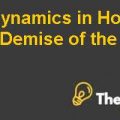All American Pipeline Case Study Solution
Valuation
Conducting the valuation of All American Pipeline through the cash flow assumption given in the case. In which, the initial investment is equal to $822 million in Year-0, without contingency cost and the annual free cash flows are given till 1992. Furthermore, after 1992, an annual growth rate would be charged on the cash flows each year amounting to 5%. The discount factor was assumed at 10% to determine the present value of these cash flows. Additionally, the depreciation was charged at 15% and 22% for first two years and 21% for the consecutive three years for tax purposes. In which, the tax rate would be charged at 46% minus 10% tax credit (as it was assumed that, the company would avail the tax credit), to be subtracted from the initial five year cash flows and then adding back the depreciation amount subtracted earlier to acquire net cash flows. Out of which, annual maintenance cost would be subtracted to determine the net free cash flows for each year. Which would then be multiplied by the discount factors to generate the present value of cash flows. Then the NPV could be calculated, which amounts to a positive 8,592.60 and its terminal values amounts to 122,044.23. Therefore, the enterprise could be estimated by adding the NPV and the terminal value, which amounts to 130,636.83.
Valuation Assumption
The terminal growth was assumed at 3.5% to calculate the net present value of the project. In which, the cash flows could change from the year 1992 onwards, as these cash flows would be inflated by 3.5% annually. Therefore, it can be evaluated that, the NPV under 3.5% growth rate would decrease to 7,360.84 from 8,592.60. Which, in turn, would reduce the terminal value to 65,516.42 and the enterprise value would also decrease to 72,877.26 from 130,636.83.
Although, the terminal growth was assumed considering the future increase in the competition of the environment attributed to Pacific Texas Pipeline launch planning of 900,000 barrels per day capacity of transporting crude oil from Santa Barbara to gulf coast of Texas. Furthermore, the expansion plans of PADD-3 and 5 to increase their capacity and they could also innovate their current pipeline to transport new OCS oil to the coast of Texas. Which, in turn, could increase future competition in the market, compromising the company’s ability to ensure its 5% growth due to the increase in competition. Where the competitors in the future could get a portion of its share in the market currently. Which would decrease its growth rate estimation, therefore, it have be assumed at 3.5%, keeping under consideration of all factors that could adverse impact its future cash flows in the market.
Moreover, it was difficult to estimate the future cash flows of the company, as it currently had not acquired any prospective clients. In like manner, it was difficult to estimate the intervention of regulatory body’s intervention. Which could have a huge impact on the future cash flow generated by the company.
All American Pipeline Harvard Case Solution & Analysis
Merger Strategy
After analyzing the historic action of Goodyear Tire and Product Company in the market, it can be assessed that Goodyear performed a conglomerate merger regarding its acquisition of Celeron Corporation, which owned AAP. Where, a conglomerate merger is in which, two seemingly unrelated companies merge together. Through which, the company intended to diversify its business functionality by being involved in oil & gas transmission and production. Which would enable the company to be less dependent on its core business function of manufacturing tire and various other item in the market. Where, it was assessed that the automobile tire industry was declining, as the organization operation among them were faced with stiff competition and lack of revenues generation. However, the acquisition of Celeron enabled Goodyear to enter into the crude oil transmission and production industry. In which, it had significant opportunities to enhance its overall profitability, attributed to the Celeron ownership of AAP. Which could enable the company to provided 300,000 barrels per day capacity to transfer new OCS oil through heated pipes to the Gulf Coast of Texas from Santa Barbara, California. Charging tariff up to $5.00 per barrel to various refineries and enhancing its economies of scale in the process. Therefore, it can be determined that, Goodyear’s strategy to acquire Celeron Corporation to enter into the crude oil transmission industry was a good one and it would ensure the company’s continued survival in the highly diverse and competitive market......................
This is just a sample partial case solution. Please place the order on the website to order your own originally done case solution













